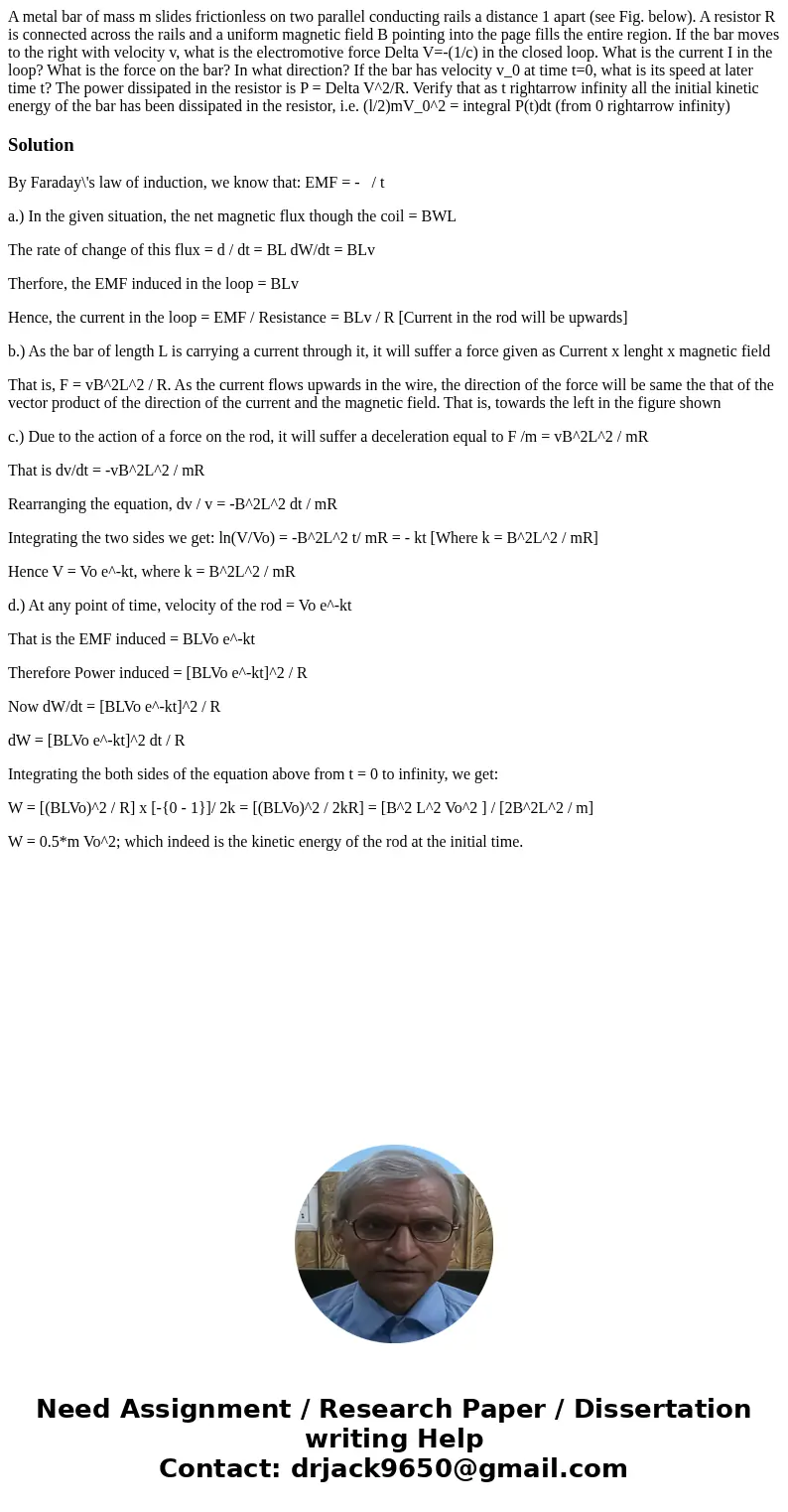A metal bar of mass m slides frictionless on two parallel co
Solution
By Faraday\'s law of induction, we know that: EMF = - / t
a.) In the given situation, the net magnetic flux though the coil = BWL
The rate of change of this flux = d / dt = BL dW/dt = BLv
Therfore, the EMF induced in the loop = BLv
Hence, the current in the loop = EMF / Resistance = BLv / R [Current in the rod will be upwards]
b.) As the bar of length L is carrying a current through it, it will suffer a force given as Current x lenght x magnetic field
That is, F = vB^2L^2 / R. As the current flows upwards in the wire, the direction of the force will be same the that of the vector product of the direction of the current and the magnetic field. That is, towards the left in the figure shown
c.) Due to the action of a force on the rod, it will suffer a deceleration equal to F /m = vB^2L^2 / mR
That is dv/dt = -vB^2L^2 / mR
Rearranging the equation, dv / v = -B^2L^2 dt / mR
Integrating the two sides we get: ln(V/Vo) = -B^2L^2 t/ mR = - kt [Where k = B^2L^2 / mR]
Hence V = Vo e^-kt, where k = B^2L^2 / mR
d.) At any point of time, velocity of the rod = Vo e^-kt
That is the EMF induced = BLVo e^-kt
Therefore Power induced = [BLVo e^-kt]^2 / R
Now dW/dt = [BLVo e^-kt]^2 / R
dW = [BLVo e^-kt]^2 dt / R
Integrating the both sides of the equation above from t = 0 to infinity, we get:
W = [(BLVo)^2 / R] x [-{0 - 1}]/ 2k = [(BLVo)^2 / 2kR] = [B^2 L^2 Vo^2 ] / [2B^2L^2 / m]
W = 0.5*m Vo^2; which indeed is the kinetic energy of the rod at the initial time.

 Homework Sourse
Homework Sourse